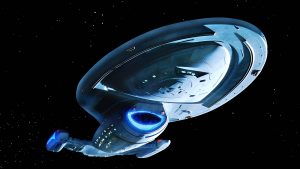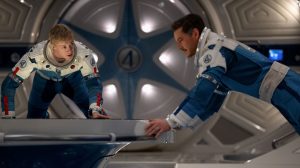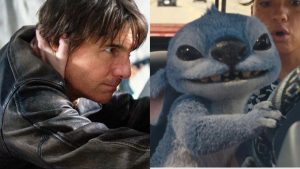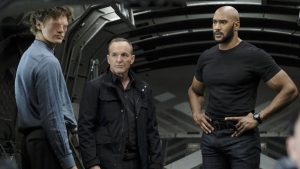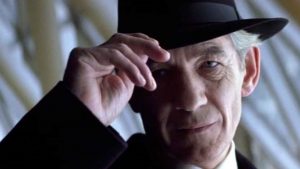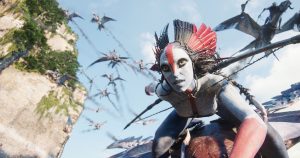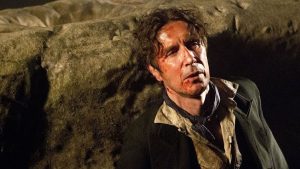
So you think you’re a pretty big nerd, huh? You think you’ve seen all the deep cut superhero shows. You’ve seen every episode of Birds of Prey, The Amazing Spider-Man, and even Legion of Super-Heroes. But those shows have their fandoms and have been acknowledged in someway or another. The secrets of superhero television go much, much deeper.
In fact, there are so many superhero shows that nobody remembers that this list has to focus on just American shows. But even with that limitation, there are a ton of superhero shows lost to time, some of which deserve a second glance.
Courageous Cat and Minute Mouse (1960-1962)
Most readers of this site know Bob Kane as the artist who came up with Batman… and then completely sandbagged Bill Finger, Jerry Robinson, and everyone else who made Batman great. Long after Batman paid off, Kane tried to double-up with a funny animal parody of the Caped Crusader and Robin the Boy Wonder.
Courageous Cat and Minute Mouse ran for 130 five-minute-long episodes, in which the heroes fought baddies such as Rodney Rodent and Professor Shaggy Dog. The episodes followed a standard superhero pattern, marked by unremarkable designs and dull dialogue. At best, the show gives us a glimpse at what Batman could have been if Kane were left to his own devices.
The Mighty Heroes (1966)
With counter culture rising in the 1960s, the combination of square morality and far-out powers were irresistible. Animation legend Ralph Bashki and Robert Taylor got in on the fun with The Mighty Heroes, a cartoon show about superheroes with outlandish powers: Strong Man, Rope Man, Tornado Man, Cuckoo Man, and Diaper Man.
The Mighty Heroes featured the type of broad jokes that entertained children, but didn’t do much to capture the larger public imagination. The series aired just 21 episodes, which re-ran in syndication before being completely forgotten.
Shazam!/Isis Hour (1974-1976)
Believe it or not, Captain Marvel outsold Superman in the 1940s, which is why DC Comics sued Fawcett Comics for infringement. Eventually, in 1972, DC started licensing the character (before buying him outright in 1991), which led to a live-action series with Michael Gray as young Billy Batson and Jackson Bostwick and John Davey as Captain Marvel, the superhero Billy becomes when he says the word “Shazam!”
Eventually, CBS paired the show with The Secrets of Isis for the Shazam!/Isis Hour. The Secrets of Isis starred Joanna Cameron as teacher Andrea Thomas, who became the hero Isis (also played by Cameron) when she said the magic words “Oh, Mighty Isis!” Gray got to reprise his role, sort of, in CW’s Crisis on Infinite Earths and Isis has since joined the world of DC Comics, but their show rarely gets mentioned otherwise.
Electra Woman and Dyna Girl (1976)
Brothers Sid and Marty Krofft made some of the strangest kids’ shows of the 1970s, so it’s no surprise that they would eventually turn their attentions toward superheroes. Introduced as segments in The Krofft Supershow, Electra Woman and Dyna Girl featured two reporters who fought crime as superheroes.
If that sounds a bit generic, well… it was. Very little of the Kroffts’ unique aeshtetic made it into the show. Stars Deidre Hall and Judy Strangis did what they could with the material, but the show offered nothing that couldn’t be found in other superhero offerings.
Legends of the Super Heroes (1979)
Believe it or not, the 1966 Batman series ran for just three seasons, with the initial excitement dying down after just its first year. However, DC kept trying to bring back Adam West and Burt Ward as the Dynamic Duo, including the horribly ill-advised specials in Legends of the Super Heroes. In addition to Batman and Robin, the special features live action versions of Green Lantern (Howard Murphy) and Sinestro (Charlie Callas), the Flash (Rod Haase) and the Weather Wizard (Jeff Altman), and Captain Marvel (Garrett Craig) and Dr. Sivana (Howard Morris).
But instead of fighting, the characters just do lame stand-up routines. The first special, “The Challenge,” involves a celebration for the birthday of retired hero Scarlet Cyclone (William Schallert). The second special is worse, a roast hosted by none other than Ed McMahon. Legends of the Super Heroes shows even the most cynical comic fan that their favorite characters can be treated so much worse.
Fred and Barney Meet the Thing (1979)
The weirdest thing about Fred and Barney Meet the Thing isn’t that the show for some reason combined prehistoric sitcom The Flinstones with the orange rocky tough guy of the Fantastic Four. It’s that this version of the Thing has almost nothing to do with Aunt Petunia’s sweet nephew from the comics.
The Thing of this show is hip teen Benjy Grimm, who spends his time palling around with friends and going to school. When Benjy sees trouble, he calls upon his magic ring and says, “Thing ring do your thing!” and transforms into the Thing. It’s an odd part of Marvel’s history, one that sometimes still gets referenced in the comics.
The Plastic Man Comedy/Adventure Show (1979)
On one hand, it’s a bit surprising that Plastic Man got his own television show. After all, the character has been around since Jack Cole created him back in 1941, and has been in the DC Universe since 1956, but he’s never been an A-lister.
Then again, Plastic Man is an animation natural. With his ability to bend in weird shapes and his fun-loving attitude, Plastic Man is more of a cartoon than he is a superhero. The Plastic Man Comedy/Adventure Show paired shorts about the elastic hero along with episodes about the not-Garfield trouble cat Heathcliff, a werewolf called Fangface, and even misadventures with his infant son Baby Plas. In between each section, the show featured live-action host segments featuring comedian Taylor Marks in costume as Plas, cracking terrible jokes.
Turbo Teen (1984)
As this list shows, a lot of early superhero shows featured characters with goofy powers, which they played for laughs. At first glance, Turbo Teen falls in line with those entries, as it features a high schooler with the power to turn into sports car. But the 13-episode series from producers Ruby Spears never played the concept for laughs, treating it just as cool as anything in the Superfriends cartoons they also made.
Although Ruby-Spears did most of its work with DC characters, Turbo Teen followed the Marvel model as teen Brett Matthews did not want his special powers, and most of the episodes involve a search for a cure. That cure never comes, as the show didn’t last past a single season.
Automan (1983-1984)
One would be forgiven for thinking that Automan is a live action adaptation of Turbo Teen, given the similar-sounding titles. Instead, Automan tried to cash in on the popularity of Tron, the Disney film from a year earlier.
Automan stars Desi Arnaz Jr. as cop/computer programmer Walter Nebicher, who creates a holographic hero called Automan (Chuck Wagner). As with the movie that it cribs from, Automan looks cool, with its neon blues and slick equipment. However, audiences couldn’t follow the overdone rules of the series, and network ABC couldn’t justify the expensive effects budget. The series was canceled after one season, only airing twelve of the thirteen episodes shot.
Sable (1987-1988)
Created by Mike Grell, an artist and writer best known for his work on Green Arrow and The Legion of Super-Heroes, Jon Sable, Freelance was one of the first hit independent adventure comics. A grim and gritty take on secret agents and private eyes, Jon Sable, Freelance let Grell develop the dark worldview he would bring to Green Arrow later on.
When ABC brought the character to television for the series Sable, the darker elements were paired away for network audiences. However, the basic spirit remained the same, with Lewis Van Bergen as the title character. The show aired seven hour-long episodes before cancelation, but that was enough to make it one of the more successful indie comic projects of the time.
M.A.N.T.I.S. (1994)
Anyone who looks at M.A.N.T.I.S. now wonders how fans of the ’90s let it disappear. M.A.N.T.I.S. was created by Sam Raimi and Sam Hamm, one of the main screenwriters on 1989’s Batman. Even better, it starred Carl Lumbly, who voiced Martian Manhunter in Justice League Unlimited and plays Elijah Bradley in the MCU.
Lumbly starred as scientist Miles Hawkins, who was paralyzed by a policeman’s bullet. After learning about the deep anti-Black sentiments in the police department, Hawkins develops an exoskeleton that allows him to not just move, but also have incredible powers, which he uses against the cops. Despite that fantastic premise, the series struggled to find an audience on Fox and moved to the Sci-Fi Channel for its last two episodes, where it did not get renewed.
Mighty Ducks: The Animated Series (1996)
Despite a hip teal sweater and superstars such as Teemu Selänne, the hockey team The Mighty Ducks of Anaheim had trouble getting respect from the rest of the NHL, thanks to the kiddie movies that gave the team their name. Mighty Ducks: The Animated Series probably didn’t help things either, adding another, weirder layer to the name.
Unsurprisingly, Mighty Ducks: The Animated Series featured a hockey team called the Ducks. But this team consisted of actual ducks, who lived on a frozen planet called Puckworld. Led by Wildwing (the hockey team’s mascot, voiced in the show by Ian Ziering) the Mighty Ducks fought evil overlords via the power of hockey. The show didn’t last past 22 episodes, and it no less than enforcer Stu Grimson to beat the memory of the show out of the real team’s opponents.
Nightman (1997 – 1999)
Nightman came from Malibu Comics, one of the more ambitious publishers to follow in the footsteps of Image Comics. When Malibu launched its own superhero line with the Ultraverse, it not only brought over top-level creators such as Steve Englehart and Barry Windsor-Smith, but also had multimedia plans. Outside of a direct-to-video move starring Firearm, however, only Nightman made it off the page.
Nightman starred Matt McColm as Johnny Domino, jazz saxophonist by night and superhero by later night. Created by Glen A. Larson, Nightman earns points for giving its hero a comics-accurate costume, silly as it looks. By leaning into the cheese, Nightman earned two seasons, but quickly fell from memory.
Black Scorpion (2001)
By the early 2000s, the sex appeal of superheroes was well explored in comics, but underrepresented in other media. Leave it to king of trash Roger Corman to pick up on the idea for Black Scorpion, the star of two direct-to-Showtime movies and one season of a series.
Played by Michelle Lintel, taking over from Joan Severance in the movies, Black Scorpion is the alter-ego of police officer Darcy Walker, who fights crime with her array of special technology. However, the real appeal of the show was the hero’s revealing costume, which didn’t get quite is much attention on Sci-Fi as it did on Showtime. As a result, the show ran for just twenty-two episodes.
The Zeta Project (2001-2002)
Animator Bruce Timm and his co-creators changed everything when they launched Batman: The Animated Series, a show so successful that it inspired classics such as Batman Beyond and Justice League Unlimited, while opening the door for related shows such as Freakazoid, Teen Titans, and The Legion of Super-Heroes.
The Zeta Project often gets forgotten among those greats. The Zeta Project spins out of Batman Beyond’s futuristic world and stars Diedrich Bader as Zee, a robot who rebels against his creators and chooses to fight for good. Created by Robert Goodman, The Zeta Project shared the visuals and even some of the characters from Batman Beyond, but never captured the audience in the same way, leading to a cancelation after two seasons.
Loonatics Unleashed (2005-2007)
The Looney Tunes have often crossed over with superheroes, thanks to the fact that parent company Warner Bros. also owns DC Comics. Many of those crossovers are great, as in the Tiny Toons episode feature the “Just-Us League” or the recent Batman/Elmer Fudd comic by Tom King. Loonatics Unleashed falls far short of those projects, falling even under Space Jam as the most embarrassing Looney Tunes entry.
Loonatics Unleashed features superheroes based on Looney Tunes characters, fighting crime in a post apocalyptic future. Although the show had moments of lightness, it mostly went for a tone similar to most superhero cartoons of the era. The combination hit like toothpaste and orange juice, yet somehow lasted for two seasons.
Who Wants to Be a Superhero? (2006-2007)
Despite what the legend says, Stan Lee was more successful as a pitch man than he was a writer or creator. So it seems like the reality series Who Wants to Be a Superhero? would be ideal for old Smilin’ Stan, at least better than his ill-fated cartoon series Striperella or the ridiculous Guardian Project he did with the NHL. After all, with Who Wants to Be a Superhero?, Stan got to be an affable host and other people came up with the characters and powers.
In Who Wants to Be a Superhero?, contestants come up with their own heroes, complete with costumes and powers, and face off in a series of challenges. The last one standing gets to star in their own comic book, published by Dark Horse Comics. The series ran two seasons on SyFy, with a children’s version airing in the UK, and launched two heroes in the form of Feedback and the Defuser. Outside of the promised comic and a SyFy original movie, neither hero has appeared since.
No Ordinary Family (2010)
After the great ’90s cartoon, The Tick returned to televisions in 2001 for a live-action show that took a sitcom approach to superheroes. That show may have flopped, but ABC saw enough value in the concept to try a different version with No Ordinary Family, with Michael Chiklis and Julie Benz as the heads of a family with superpowers.
Despite its great leads, No Ordinary Family didn’t make it past its initial 20-episode season 1. However, co-creator Greg Berlanti went on to find much more success at the CW Network, combining teen drama with superheroics on Arrow and The Flash.
The Cape (2011)
If anyone remembers The Cape at all, its for a running gag on the dearly-departed sitcom Community, where Abed’s obsession with the show led to the catch-phrase “six seasons and a movie.” The joke, of course, is that only Abed would see value in a dumb show about a guy who gets powers from a special piece of clothing.
To its credit, The Cape tried to capture the tone of Silver Age comics. The Cape fought with The Carnival of Crime, a circus troupe/criminal outfit that feels like it came straight from early Spider-Man comic books. But the show treated the material with utter seriousness, resulting in a show that no one but Abed loved or watched. After an initial push from the network, the show was pulled from air and buried its final episode on the NBC website.
Powers (2015-2016)
If The Cape suffered an indignity by getting its finale relegated to the network website, Powers had a worse fate, streaming exclusively on the Playstation Network. Before that, Powers was a respected indie comic by Brian Michael Bendis and Michael Avon Oeming, a series about a special police division that deals with superheroes.
Bendis remained involved with the TV adaptation of Powers, which starred Sharlto Copley, still hot off of District 9, as former superhero and current detective Christian Walker. However, fans found the show a lackluster take on the comic and no one had Playstation Network anyway, leading to its cancelation after two seasons.
Justice League Action (2016)
As one of the premiere teams in the world of comics, the Justice League of America has had many animated incarnations. Justice League Action deserves to stand next to Justice League Unlimited as one of the best depictions of DC’s main superteam. But Warner Bros. indifferent treatment of the show resulted in it coming and going without leaving much of a mark.
Justice League Action features all of the heroes one would expect, including Batman (voiced by Kevin Conroy!), Wonder Woman, and Superman, along with a host of great guest stars. Sean Astin plays Shazam, with the actor’s father John Astin voicing Uncle Dudley, while comedian Hannibal Burress played Mister Terrific. The kid-friendly episodes celebrated the weirdness of the DC Universe, but Warner grew bored with the show even before it premiered in the US, and gave it no promotion, letting it die after a single season.
Powerless (2017)
Before it got reimagined as a pseudo-Department of Homeland Security for the MCU, Marvel had one of the most unique concepts in comics with Damage Control. Damage Control followed the people who clean up after superheroes and deal with the headaches of insurance and rebuilding. Warner Brothers borrowed that concept for the sitcom Powerless, about a security company in the DC Universe.
Powerless starred Vanessa Hudgens as a new employee of Wayne Security, operated not by Bruce but by his doofus cousin Van, played by Alan Tudyk. With a host of great supporting players, including the aforementioned Abedm Danny Pudi and comedian Ron Funches, Powerless had a lot of potential. But the show never caught on and was pulled after eight of the twelve episodes aired.
The Rocketeer (2019-2020)
The Rocketeer began life as a series of comics by artist Dave Stevens, who drew heavily from pin-up artist Betty Page for his hero’s girlfriend. Disney toned down some of that sexiness for 1991 movie version directed by Joe Johnston, but between the characters’ retro aesthetic and vampy ladies, The Rocketeer hardly seems like a an ideal kid franchise.
And yet, Disney Jr. thought it wise to create a show about 7-year-old girl Kit Secord who inherits the rocket and becomes the new Rocketeer. Unlikely as that sounds, The Rocketeer is a delightful series for its intended audience. And older fans will appreciate original Rocketeer star Billy Campbell, who played Cliff Secord in the movie, voicing Kit’s father Dave Secord. Still, the show just got one season of 42 short segments.
The post 23 Forgotten Superhero TV Shows appeared first on Den of Geek.
